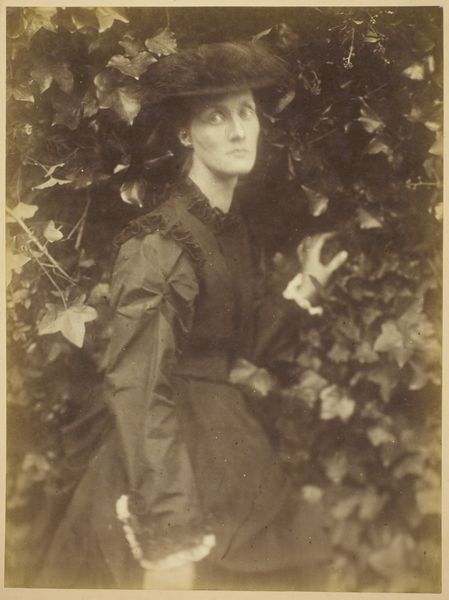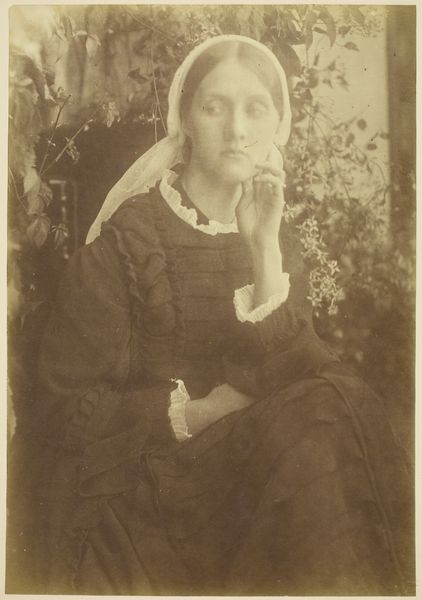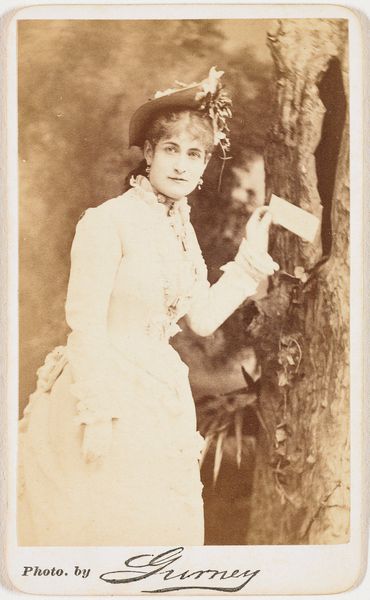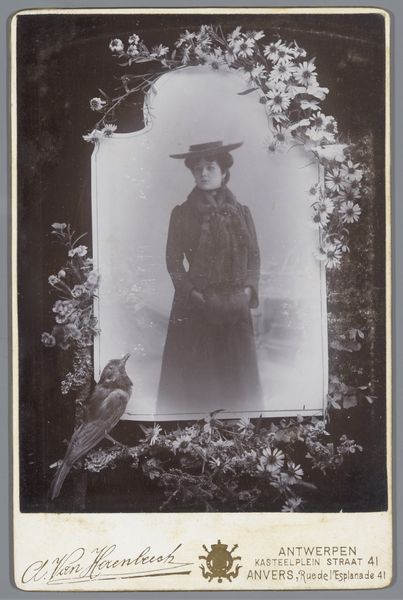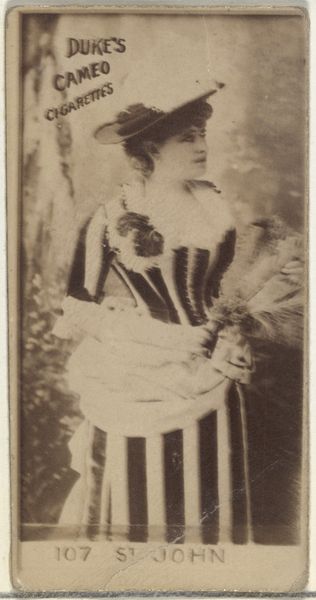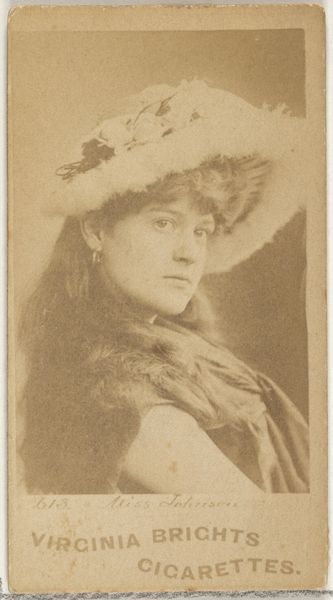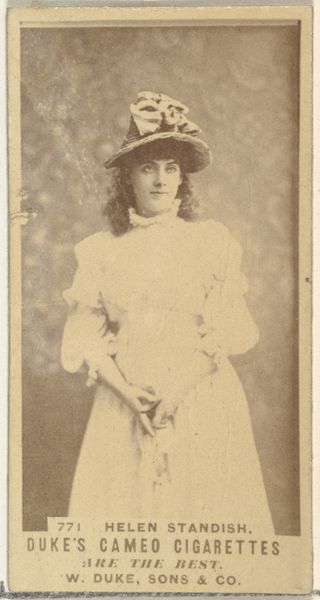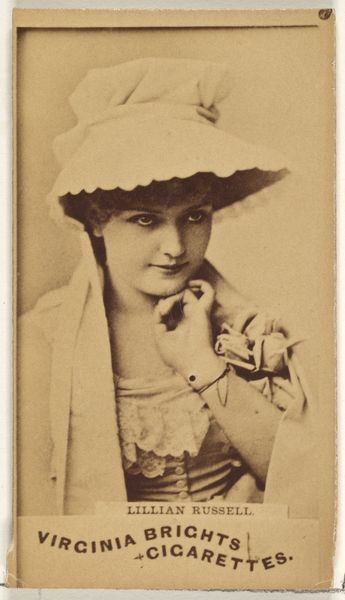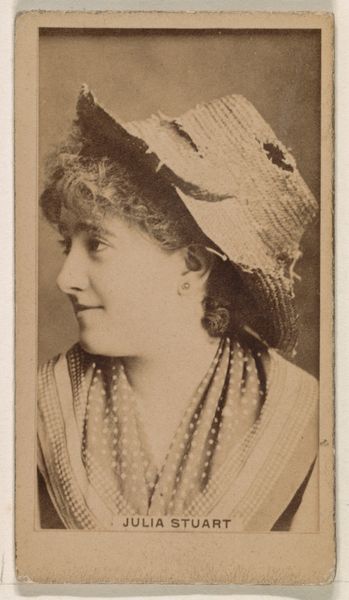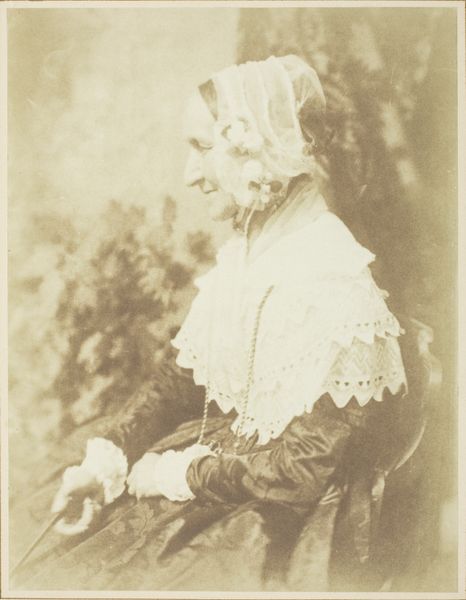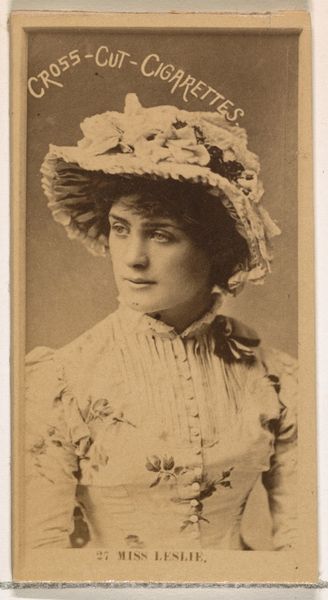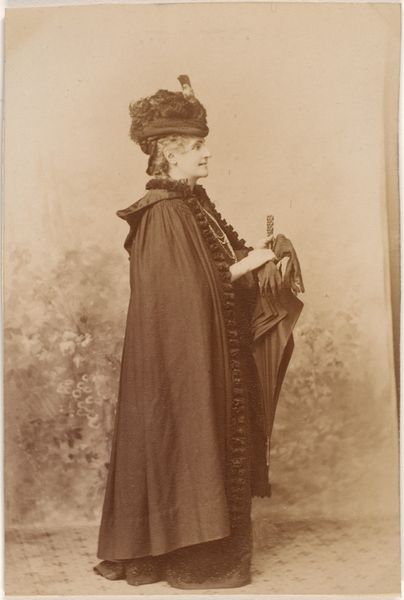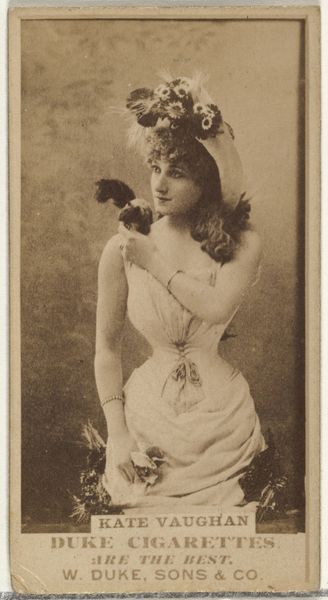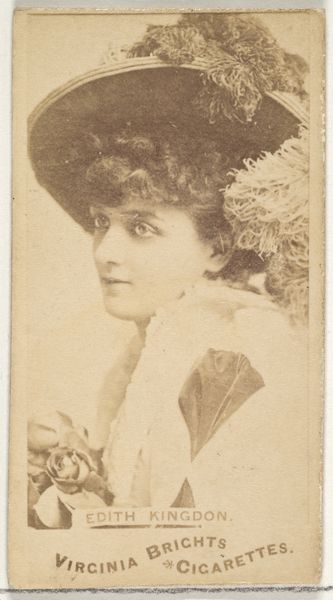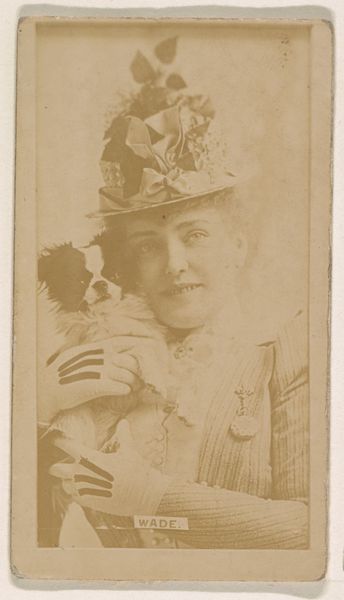
Mrs. Herbert Duckworth ("She Walks in Beauty") Possibly 1874
0:00
0:00
Dimensions: 35.6 × 27.3 cm (image/paper); 44.3 × 35.4 cm (mount)
Copyright: Public Domain
Curator: Standing before us is Julia Margaret Cameron's albumen print, "Mrs. Herbert Duckworth ('She Walks in Beauty')," likely created around 1874. The print is now part of the collection at The Art Institute of Chicago. Editor: It has such a dreamlike, ethereal quality. The soft focus lends an almost ghostly presence to Mrs. Duckworth. And those leaves, they almost seem to be reaching out. Curator: Cameron’s photographs often blurred the lines between portraiture and romantic allegories. She was active during a transformative period of English society. Consider that she was pushing boundaries within Victorian ideals concerning class, social responsibility, artistic expression, and particularly feminine expression. Her work consistently uses literature as a base for her subjects; she has very close links to circles involving intellectuals such as Tennyson and Thackery. Editor: Yes, "She Walks in Beauty" resonates deeply. There's something so symbolic about that title, borrowed from Byron's poem. It almost imbues her portrait with a halo of purity, or perhaps of melancholy beauty. But even her dress, a dark hue amidst the foliage. Does this darkness invite viewers to ponder shadows or unveil a sense of mystery? Curator: Undoubtedly. Cameron’s aesthetic aimed to capture something beyond mere likeness; she sought emotional truth. There's a distinct rebellion against the highly polished studio portraits favored by the establishment, which highlights her commitment to more artful means of expressing the soul of her sitter, despite what others may have been doing at the time. Editor: Thinking about it again, her gaze avoids ours, it points slightly away, which almost heightens this mysterious allure. I like the use of flora as part of the visual storytelling too: foliage seems so vital. The vines convey ideas of organic growth or hidden worlds of nature. Curator: Absolutely, and Cameron often favored allegory in these naturalistic spaces. This wasn't just about aesthetics. Her approach questioned societal norms regarding portraiture and photography itself, especially what defined beauty and worth in the period's perception of art. She did not capture nobility; rather she redefined art for everyday subjects and challenged existing power dynamics in England through photography. Editor: Looking back, this image is truly captivating in the balance struck between aesthetic beauty and evocative moodiness. Curator: It serves as an example of how Cameron blended the romantic spirit of her age with an innovative and daring approach to photography.
Comments
No comments
Be the first to comment and join the conversation on the ultimate creative platform.
